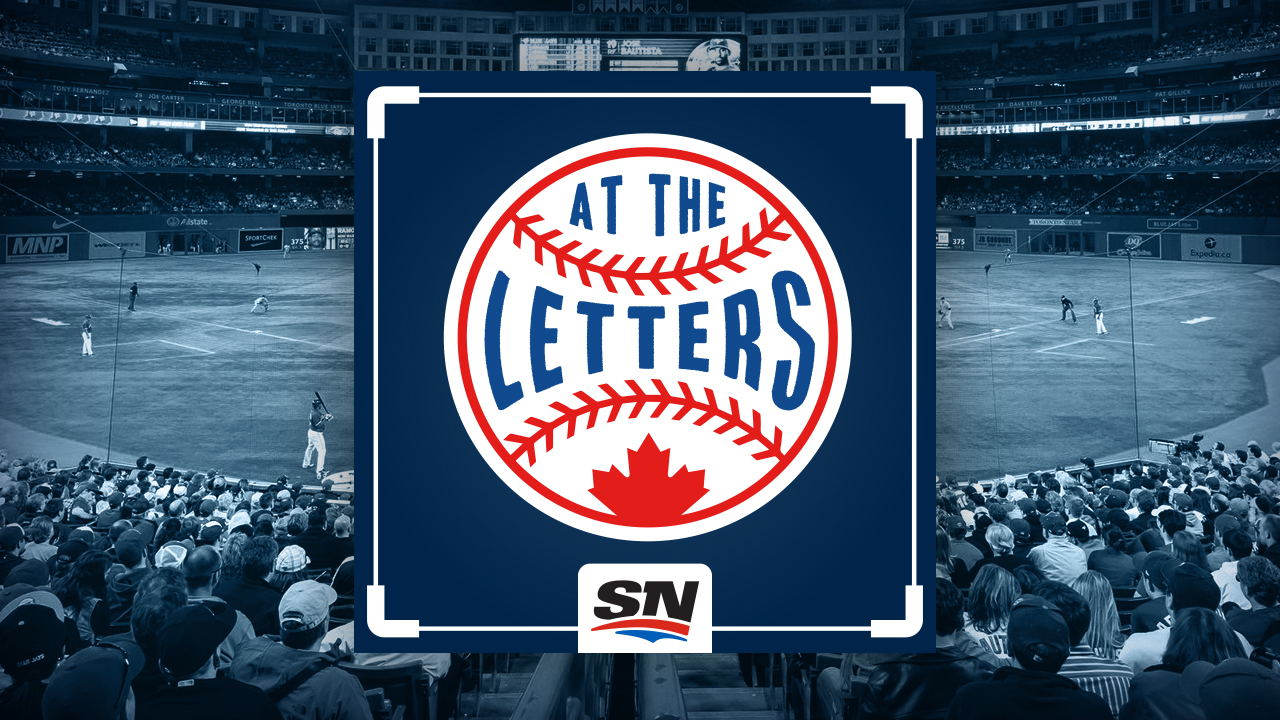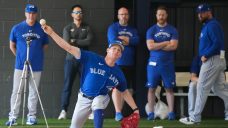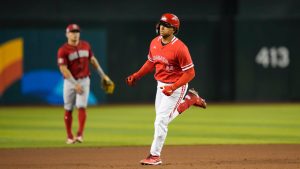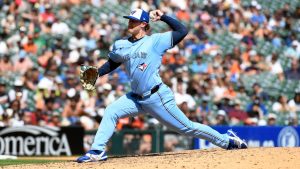Batting order construction is an art for the perpetually angsty.
The long baseball season affords us a spring camp, 162 games, and, you hope against the best efforts of the voice in your head, a lengthy playoff run. In each of those stages you can nitpick, debate, and rearrange the optimal order for a team’s nine position players. Assume all 13 rostered position players are worthy of being in the debate, and you have 259,459,200 possible combinations to consider.
Today, we rank those 259,459,200 possibilities from our least favourite to favourite.
Kidding. Come back. In seriousness, even just limiting the order to your starting nine, there are 362,880 possible orders. It’s enough to cause swells of anxiety and, in the end, that terrible feeling that it probably doesn’t matter very much, and you’ve spent the show or article or season fretting over fractions of a fraction.
Sometimes, though, it does matter. For the 2023 Toronto Blue Jays, it feels like the thing that matters most on the position player side of spring training, a day-one talking point that stands to dictate how the team’s best hitters and biggest moments are leveraged.
What does The Book say?
The Book is an actual book from back in 2007, and its research spawned some further analysis on how to optimize a lineup. The specifics will shift a bit over time based on the league’s run environment and rules, plus the normal ebbs and flows of the game. Using that foundational research, though, we have a few guideposts: The No. 3 spot has been overemphasized a bit historically, you want a high on-base player at the top, and the Nos. 2 and 4 spots are most important.
How much does it matter?
Optimizing a batting order is fairly straightforward in an average scenario. Plugging in an average opposing pitcher and an average performance for each hitter, we can simulate how a game would play out over nine innings with every possible lineup combination. This helps illustrate the difference lineup construction makes in a context-neutral environment.
Using the ZiPS projections for each Blue Jay for 2023 and their presumed starting nine, the “optimal” lineup would be expected to score 5.05 runs per-game, while the least-optimized lineup would be expected to score 4.73. That difference of 0.32 runs per-game is roughly the difference between a league-average offence and a top-seven offence last year, and would have bumped the Jays from fourth to second. But no manager is at risk of using the worst possible lineup; even the 30th-best lineup would score just 0.01 fewer runs per-game than the optimal one, and the placeholder lineup I used to start the exercise was only 0.1 runs per-game off the optimal.
In other words, as long as a manager isn’t actively trotting out a bad lineup construction, the differences are fairly small.
So why talk about it so much?
The Book (or, more colloquially, the book) is operating in a vacuum, but the Jays’ decisions aren’t taking place in a context-neutral environment. There are a number of reasons you may want to go away from the “optimal” construction, or consider macro-situations instead of the aggregate.
This is easy against left-handed pitching
As a righty-heavy team last year, John Schneider’s job was pretty straightforward against southpaw starters. Set it and forget it.
Even this year, where one or two of Brandon Belt, Daulton Varsho, and Kevin Kiermaier figure to start against left-handed pitchers, Schneider’s task will be fairly simple. Those lefties will hit in the lower half, maybe even the lower third, of the lineup, and the top of the order will look similar to how it did 2022.
Managing platoon splits
Around baseball, righties hitting against lefties was the most productive hand-versus-hand matchup in the league, with a .320 OBP, .416 SLG, and 108 wRC+ versus league averages of .312, .395, and 100, respectively. As you’d expect, lefty-on-lefty hitting was by far the least successful (.300, .347, 85), while lefty-hitting-righty was a shade above average and righty-hitting-righty was a shade below.
Due to a combination of randomness and being so righty-heavy, the 2022 Jays rarely got the benefit of a platoon advantage. Toronto was 28th in total plate appearances where a right-handed hitter faced a left-handed pitcher, which is a shame, because Jays righties teed off on southpaws (.337, .448, 124). Knowing that, opposing managers likely found ways to start their left-handers against teams other than Toronto. The saving grace? While the Jays saw 17 per cent more righty-righty matchups than the next highest team, they also clobbered righties (.337, .446, 124).
Still, platoon splits do matter. It’s just that the Jays had (and have) very good hitters. (They also gave very few plate appearances to the doomed lefty-lefty situations.)
Given a large enough sample, few hitters are going to possess “reverse” splits, or even neutral splits. Among 184 active players with at least 500 plate appearances against both pitcher types, only 12 have maintained reverse platoon splits, compared to 142 with a notable platoon advantage and 30 for whom the difference is small. Unless you’re Max Muncy, I need a pretty compelling reason to believe you have a reverse-platoon skill rather than just some reverse-platoon results.
Vladimir Guerrero Jr., for example, has hit righties better than lefties for his career, and Matt Chapman has been split-neutral. I’m inclined to believe that’s the noise that comes with fairly small samples added up (Guerrero Jr. does not face many lefties) and the mark of good hitters hitting well. Bo Bichette and George Springer, meanwhile, have traditional platoon splits.
Big picture, you’re generally better off managing for the platoon advantage.
Slotting the lefties in against righties
If the Jays had gone out and acquired an obvious top-of-the-order left-handed bat, things would again be quite simple. You’d slot that player second or third in the order to break up the righties at the top, and the specific order wouldn’t matter a ton. Instead, the Jays acquired a trio of lefties who are good, but not so good they’re automatically hitting atop the order every day.
That lineup versatility is still important, though. With four left-handed hitters, Schneider’s options for pinch-hitting, platooning, and off-day maneuvering are all improved. Even forcing an opposing manager to make tougher decisions when they get to their bullpen against the bottom of the order can be helpful.
For example, if an opposing manager wants to avoid a righty pitching to Belt and Varsho hitting fifth and seventh, they might go to a lefty, giving Schneider the opportunity to pinch hit a righty with a locked-in platoon edge, and giving the No. 6 hitter, Chapman, a righty-lefty look. Belt, Varsho, and to a lesser extent Cavan Biggio all become pinch-hit candidates when an opposing manager brings in a righty.
Over time, those small advantages can add up.
Lefties higher in the order
It’s unclear if the additional lefties will impact the top of the Jays' order. Again, it’s your best hitters who should hit at the top of the lineup regardless of handedness since they’re the ones you want getting extra plate appearances when the lineup turns over late in games.
Can Belt or Varsho hit well enough to land near the top of the order against righties? It’s certainly possible. Belt’s 2021 season was a clear middle-of-the-order performance against right-handed pitchers, and projection systems are optimistic about a healthy Belt performing closer to 2021 than 2022. Varsho has less of a track record, and while the power looks very real, there are still questions about how often he’ll reach base.
Is Varsho in the three-hole a worthwhile move if he posts a .320 OBP? Or, perhaps more important: is he a big enough threat against righties to make an opposing manager’s decision difficult?
If the Jays go Springer, Guerrero Jr., Varsho/Belt, Bichette as their top four, an opposing manager faces the following decision with the three-batter minimum: Bring your best righty in for the top of the order to neutralize the Jays’ top bats and accept one strong platoon disadvantage, or keep the previous pitcher in for the first two hitters and then turn to a lefty for a strong platoon advantage and, if the inning continues, a strong platoon disadvantage.
If I’m an opposing manager, I’m taking my chances with Varsho/Belt and doing what I can to limit Springer, Guerrero Jr., and Bichette. If opponents feel differently, Bichette (or whoever hits fourth) could really stand to benefit. (Guerrero Jr. and Bichette had the most righty-righty plate appearances in baseball last year, by far. Getting even one of them a few extra strong-side opportunities would be great.)
Renewed health for Belt or improved on-base skill for Varsho would make this a worthwhile experiment; if they’re the 2022 versions of themselves, it’s a bit tougher.
Other considerations
The new baseball environment could change some of our accounting here. How the limits on defensive shifts affect Belt, Varsho, Biggio, and Danny Jansen will warrant watching. If stolen-base attempts increase as much as anticipated, structuring the bottom of the order becomes a more important question, as you’ll want to run more but without taking the bat out of the hands of Guerrero Jr. or Bichette. Injuries and performance will dictate plenty here, too.
There is also the less tangible element of player comfort. A player’s splits at a certain lineup position are extremely noisy, but if an elite hitter tells you he prefers one spot to another – or in the case of Guerrero Jr. and Bichette, the chance to watch the other’s at-bat – that’s worth taking into account. As the optimization numbers showed, the differences between a very good lineup and a perfectly optimized lineup are small enough that player feedback is relevant.
And hey, if no decision is made by opening day, 162 games are enough to trial 0.0000006 percent of all possible iterations.






